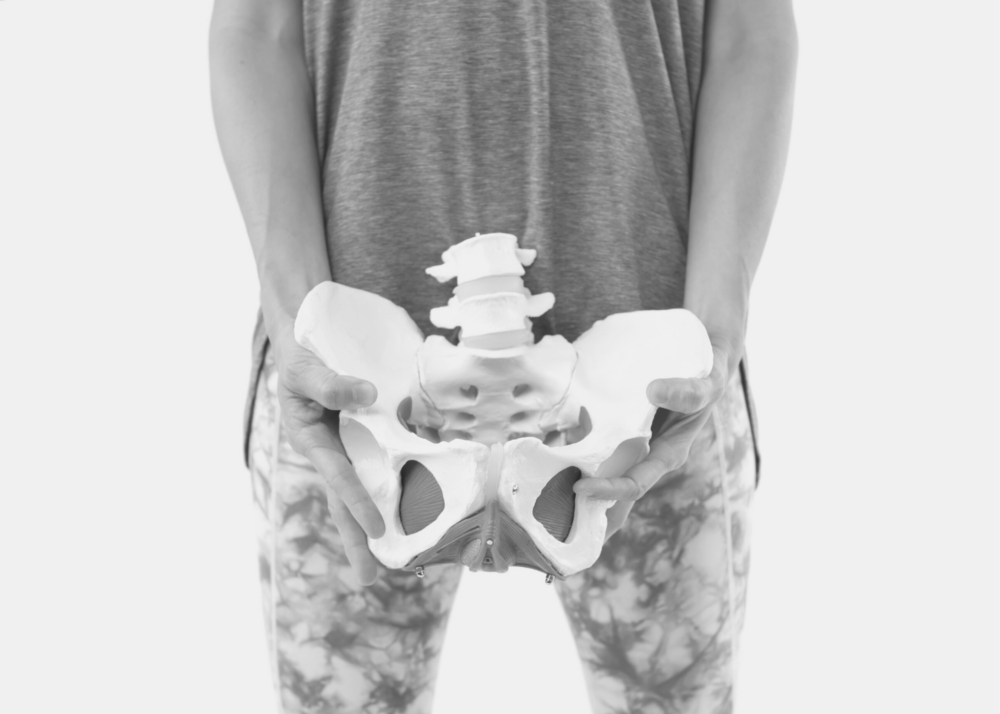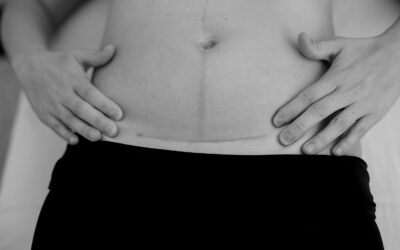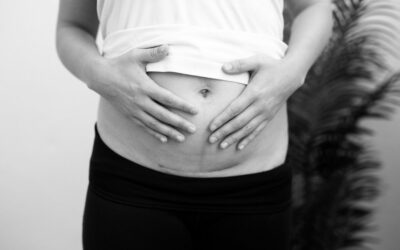Postpartum sciatica is a painful condition that occurs after pregnancy. If you have sciatica pain, you know it’s no fun!
Sciatica happens when the sciatic nerve becomes compressed. This can happen due to carrying a newborn or lifting heavy objects. Sciatica is pain that travels anywhere from the low back to the glutes (butt) to the back of your thigh. Sometimes pain may be felt in the lower leg or even into your foot and toes. You’ll feel numbness, tingling and pain in the lower part of the body.
The sciatic nerve is a large nerve that travels in this region. Irritation of the sciatic nerve anywhere along this path may be the source of pain. The muscles here (glutes) have trigger point referral patterns like sciatic nerve irritation. This means that if you have tight muscles in this area you might also get some pain in your butt or down the back of your leg. It’s difficult to discern for certain if it’s tension on the nerve, tight muscles, or a combination.
If left untreated, sciatica can lead to serious problems. Diagnosing and treating this condition is imperative. This may include permanent nerve damage. Nerve damage can lead to muscle weakness, chronic pain, decreased mobility and more. Treatment options may include physical therapy, anti inflammatory medications and sometimes surgery.
When to get medical help with postpartum sciatica
Experiencing worsening radiating pain down to your foot including numbness, and/or weakness? Have general leg pain? Discuss with your provider. Reach out to your provider immediately if:
- You are experiencing numbness in your “saddle region” (pubic or pelvic bone to tailbone area)
- Sudden loss of bowel or bladder control
Not experiencing any of the above medical concerns? Have you discussed things with your primary provider? If yes, then let’s move on to what you can do about sciatica.
What helps sciatica and pelvic pain
Stretching
Stretch the muscles along the pain area. This should feel neutral or positive. It’s great to feel a stretch but don’t push into pain. Think “sore but safe” or “motion is lotion.” Hold most stretches for 30-60 seconds, 1-2x each side. Do this depending on what feels good to your body and what you have time for.
- Glutes: lying on your back bring 1 or both knees to chest.
- Piriformis: lying on back (or sitting). Bring 1 ankle onto opposite thigh. Need more stretch? Pull the knee and ankle towards your opposite shoulder until you feel the stretch in your butt.
- Hamstrings: sit at the edge of your chair with 1 leg straight and your back straight. Hinge forward at the hips until you feel a stretch in the back of your thigh.
- Gastroc: stand at a wall. Place your toes/ball of your foot up on the wall while your heel is on the ground. Lean towards the wall until you feel a stretch in the back of your lower leg.
- Pelvic tilts and circles on your back or sitting on a chair or an exercise ball.
- Lumbar rotation (lying on your back with your knees bent letting your legs fall side to side together).
Nerve glides
Lying on your back or seated in a chair straighten one knee until you feel a slight stretch in the back of your leg. Next, straighten and bend your ankle back and forth with only 1-2 second holds for 10 repetitions.
Movement
Try to avoid sitting or standing for too long in one place. Change up what surface you’re sitting on. Take brief walks if possible. Use sit to stand options. Listen to your body when it’s time to move! Notice patterns and set timers if needed to remind yourself to move.
Proper posture
- Pelvis: tilt your pelvis back and forth. Arch your back and untuck your tailbone then flatten your back and tuck your tailbone. Find a happy medium that feels ok to you. Doing this back and forth can feel like a nice motion. Go within the range that feels good to you.
- Ribcage: arch your back and sit your ribs forward. Then flatten/round your back and tuck your ribs back. Find the happy medium where your ribs stack over your pelvis.
- Another quick check is that your ears are over your shoulders and over your hips when sitting. It should also be the same in standing plus hips over ankles.
- If you get discomfort with standing, consider adding a stool under one foot. You can also alternate placement to mix up stance.
Massage/foam roller
Use a racquetball, tennis ball or other massage balls to work into your glutes. You can use this anywhere else along your pain area (back of thigh or lower leg, too). You can also use a foam roller along this same area – butt, thigh and lower leg.
Core strength for postpartum sciatica
A great long term solution is to connect with your pelvic floor and lower abdominals. You can work on breathing techniques to build up core strength. This strategy will:
- Improve your posture
- Decrease overuse of muscles
- Tighten up on you and allow you to move through transitions/movements during your day with more ease
Physical therapy
Working with a local pelvic PT for postpartum sciatica can help. No one wants to live with chronic pelvic pain! A PT can help with manual therapy techniques including:
- Manual trigger point release
- Fascial releases
- Muscle energy techniques or trigger point release with dry needling
Other helpful tools
Depending on when/where you’re getting pain and how much, other options include:
- A seat cushion for in the car or at a desk
- Kinesio taping
- A TENS unit for pain relief
Similar conditions to postpartum sciatica
- Sacroiliac joint dysfunction is when the sacroiliac joints become inflamed or irritated. You may have pain in the lower back that radiates down one or both legs.
- Pelvic inflammatory disease (PID) is a serious infection of the reproductive organs. It is sometimes caused by bacteria. Symptoms include back and abdomen pain, abnormal vaginal discharge, fever, and nausea.
- Irritable bowel syndrome (IBS) and sciatica have similar symptoms. These include cramping, pain in the lower back and legs and difficulty pooping.
- Interstitial cystitis (IC) is a chronic bladder disorder. It can cause severe discomfort and pain in the lower abdomen and pelvic region. Symptoms include burning, frequent urination or urges, and pressure or bladder pain. You may also experience pain during sex.
____________________________________________________________________________________________________
Interested in more tips on how to prevent or overcome Pelvic Floor Problems?
Download this free guide for some simple, do-able, totally-not-weird tips to take better care of your down there.
____________________________________________________________________________________________________
Some links may be affiliate links. The products we recommend are products we use or recommend to clients.





